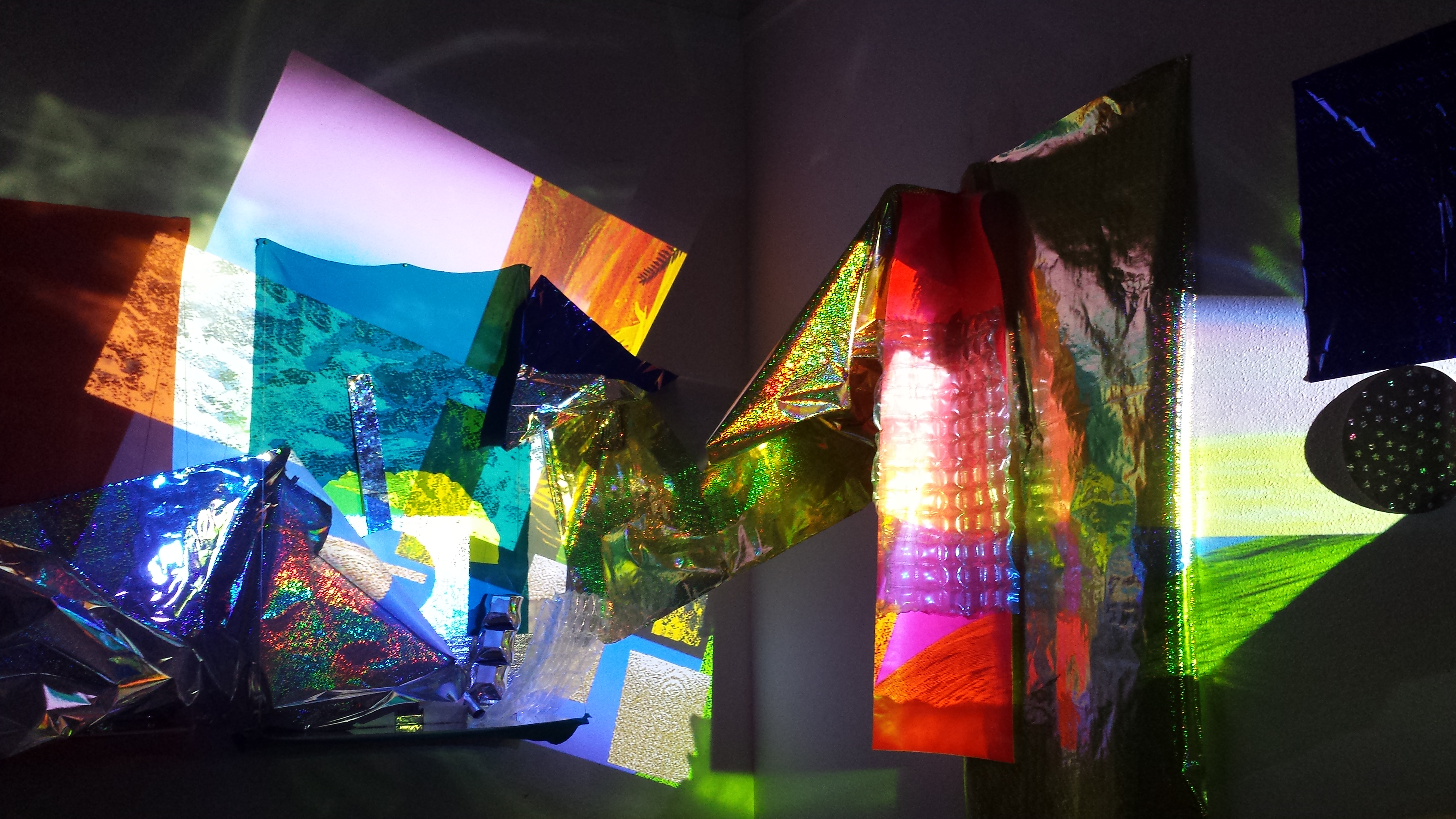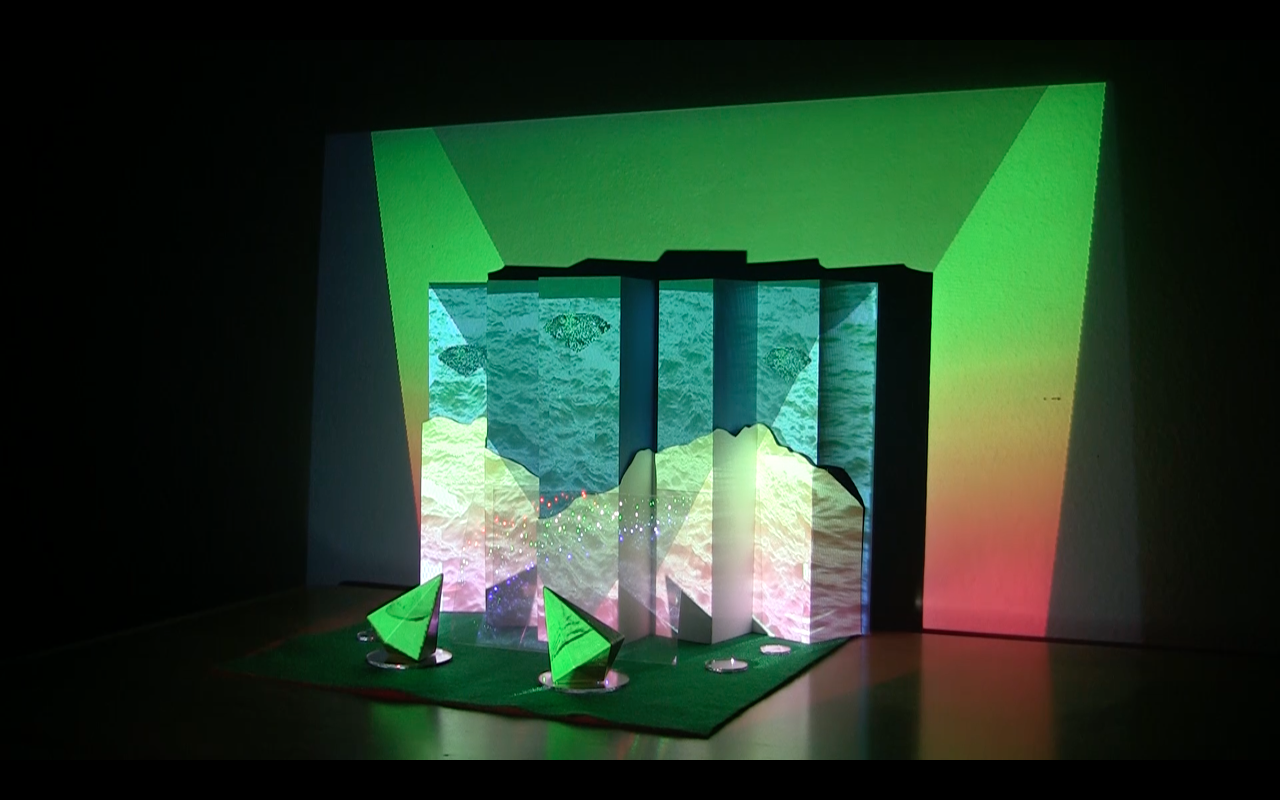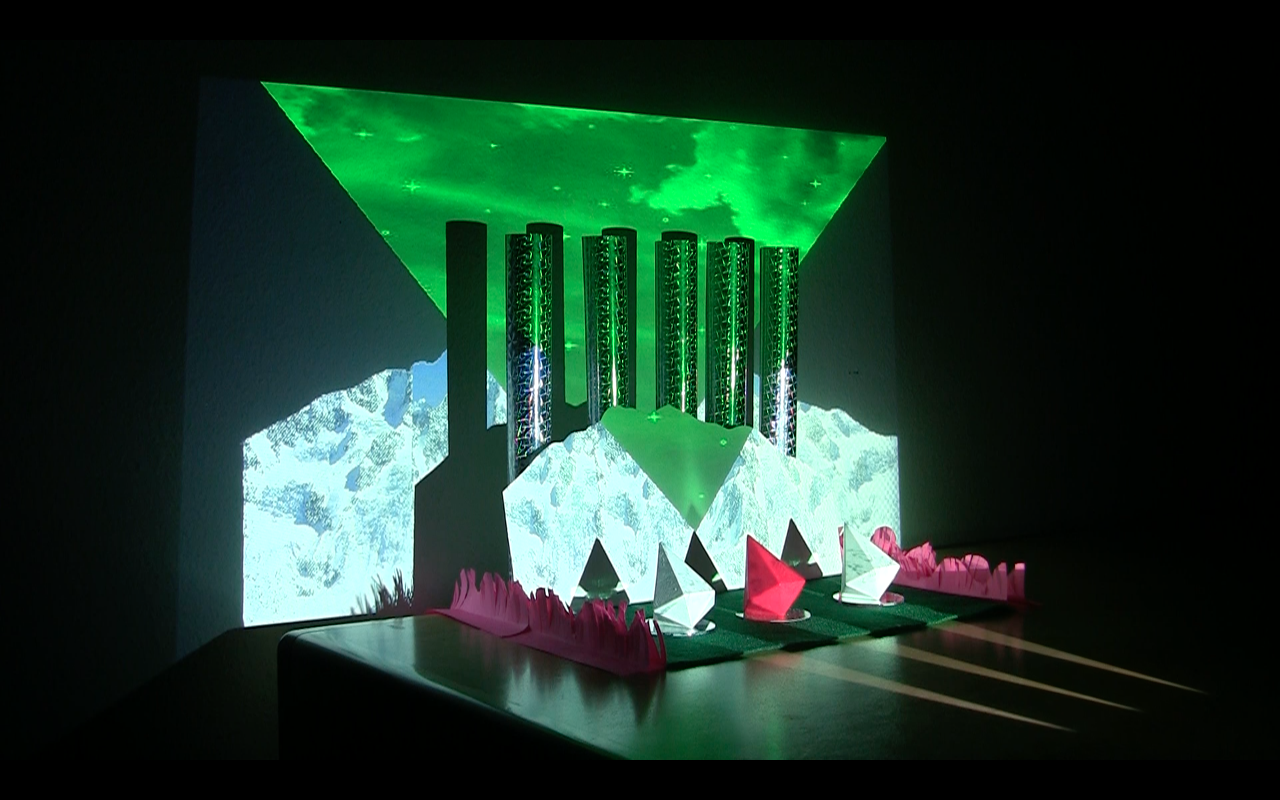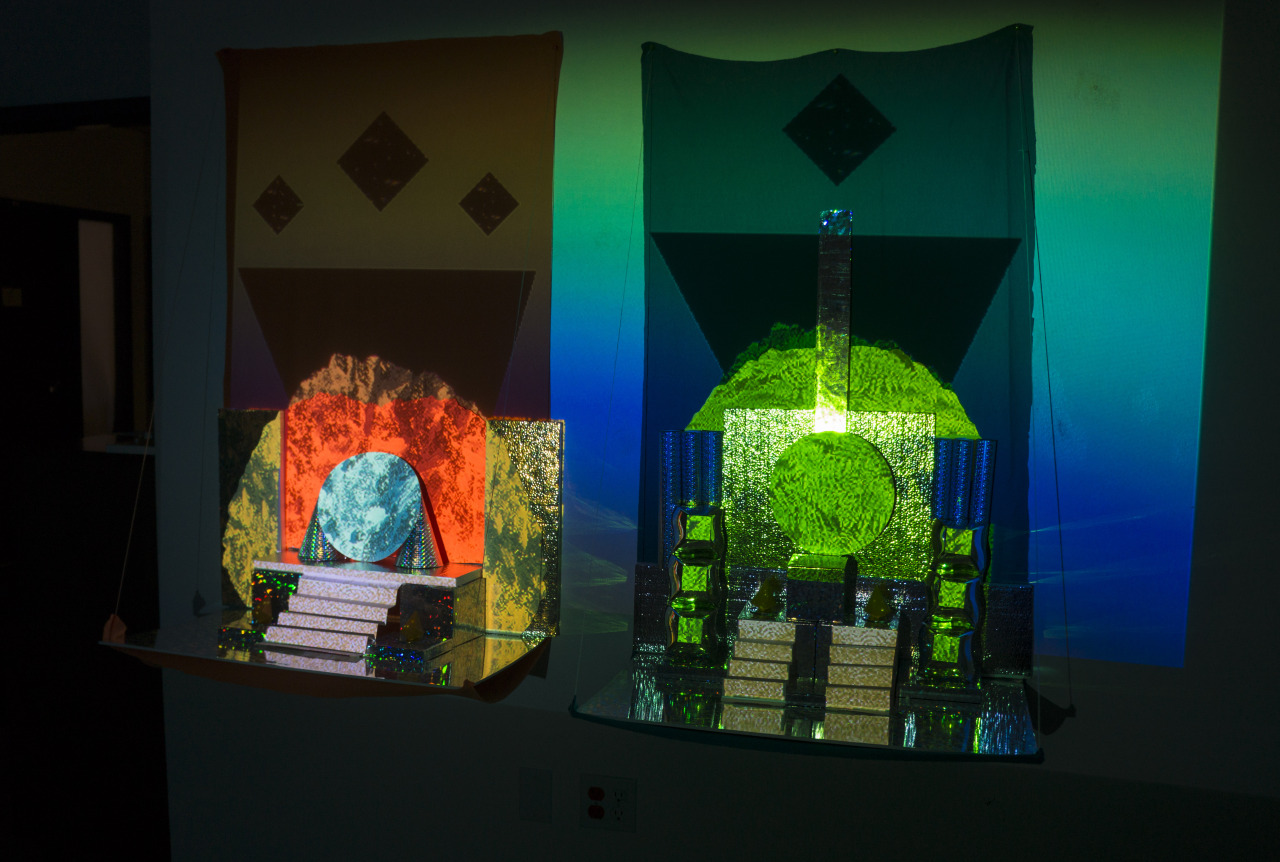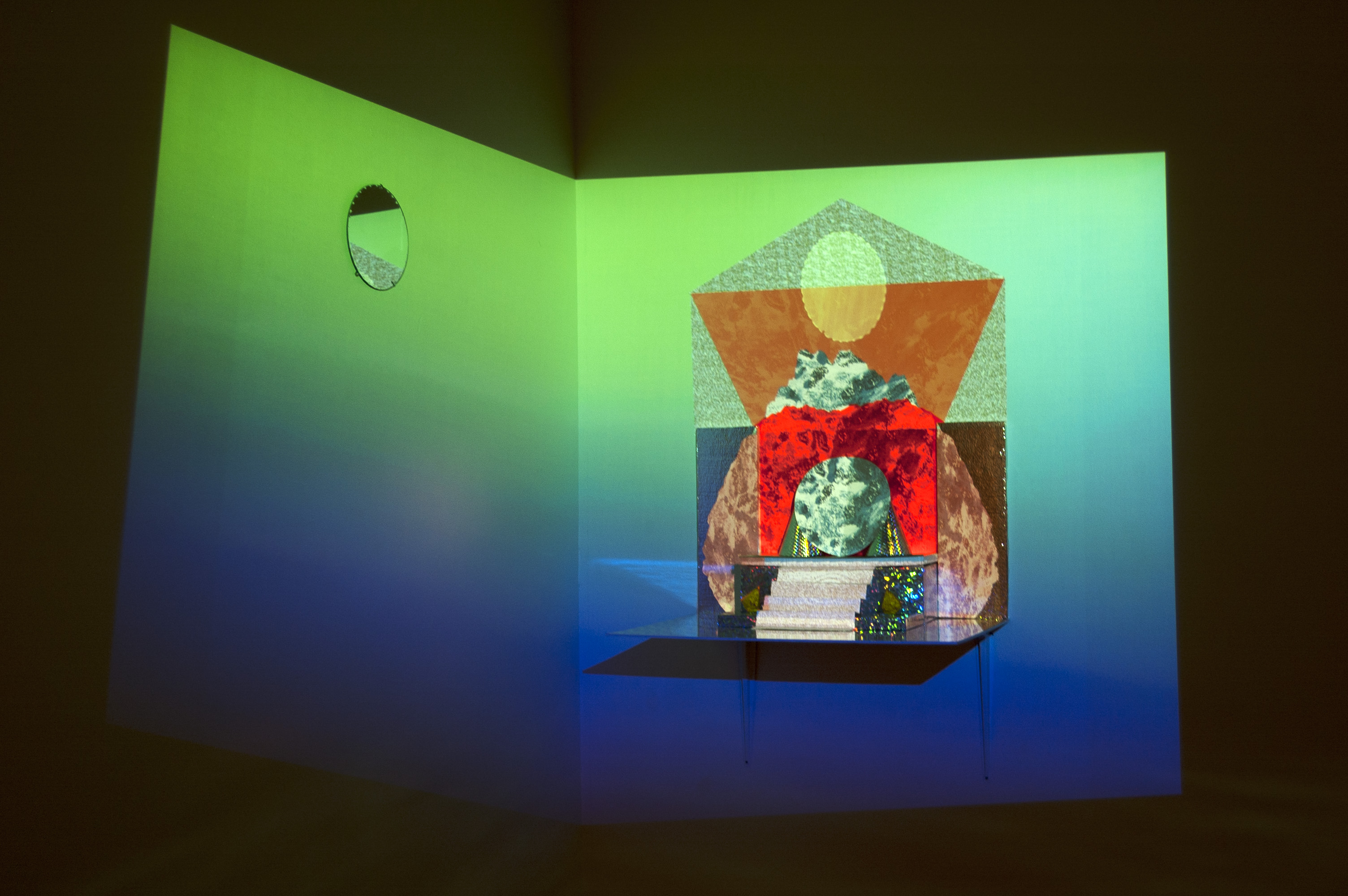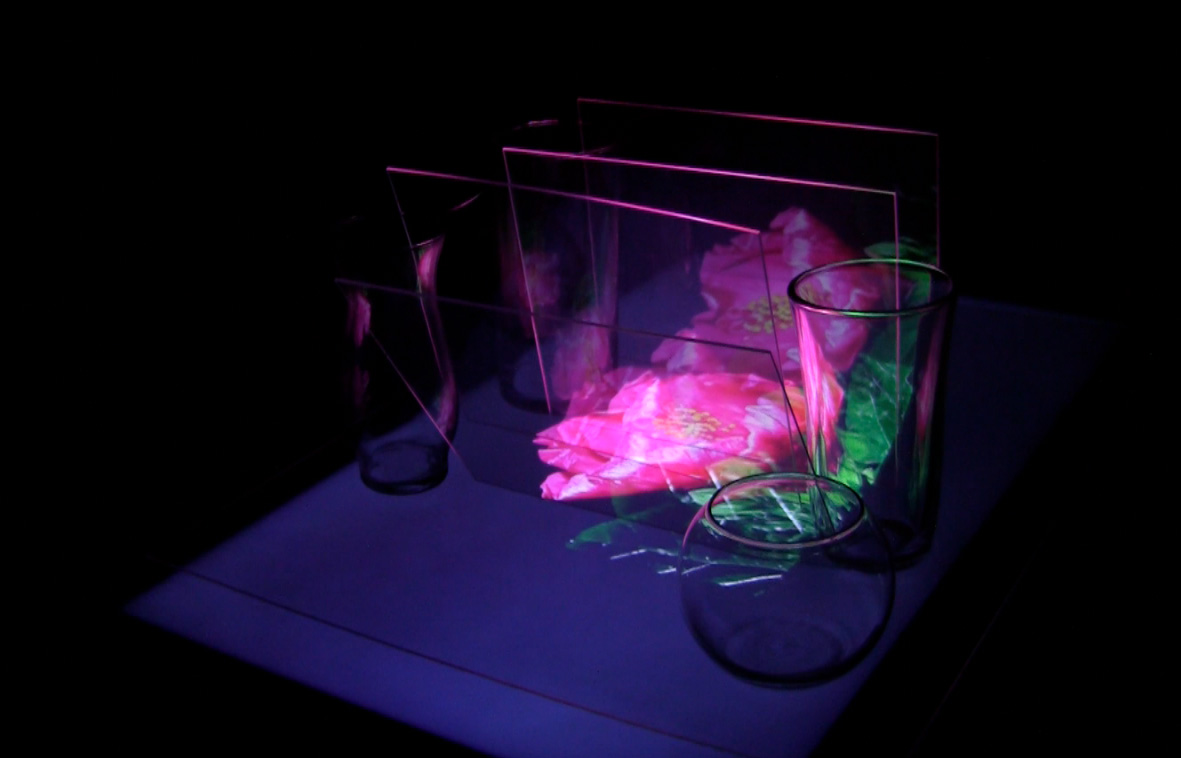Natalie Wood is an MFA candidate in Digital Art at the University of Oregon and graduated from BYU. Wood lives in Oregon.
Tell us about your evolution as an artist. In my previous work I was interested in memory, specifically how memory is inherently shifting and intangible. I would reflect back on childhood memories such as planting flowers with my mother, or the crystals that hung in our kitchen window casting rainbows, and I wanted so badly to relive these moments through my art. My work revolved around re-creating these memories but the pieces would fall short of how the experience really felt. They lacked in smell, touch, sound and I could not find the right balance of sharpness and blurriness that memories teeter between. So I stopped thinking about re-creation but instead imagined experiences in that might happen in the future, such as what it would be like to travel to space or change my identity. In this way, I did not have an emotional connection to the moments in the same way I did with the memory pieces, because the events I was playing out never really happened. All the while I was experimenting with video, gifs, screenshots, and found objects to convey these experiences. This began to evolve into what I am currently working on, which is embodying elements of those childhood memories and attempting to create immersive spaces that feel magical. I use projectors as a way to cast images of flowers and colors around a dark room, onto objects and viewers as they enter into the space. I have also started to consider scale with these diorama size sculptures that have videos and images projected onto them. With the dioramas, the audience must shrink themselves down to imagine themselves in the space thus activating their imagination. My hope is to create works that place the viewer in a suspended sense of reality where they believe magic might exist.
How are your experience at Oregon contrasted your undergrad at BYU? My experience at the University of Oregon has been a very positive one thus far and is adding to the knowledge I gained at BYU. In Provo, I was fortunate enough to have professors who were highly encouraging while pushing me to experiment with new mediums and develop strong conceptual ideas. I was surrounded by a group of friends in the BFA program where we worked closely, had pop up shows, and an art club. I am grateful that I was able to foster and develop my art practice among people who also helped strengthen my testimony of the gospel. However after six years in Provo, I felt the need to go somewhere new. Here in Oregon I have found a similar community of artists who are welcoming, hard working, and help one another to improve. It is exciting to be apart of a new program that is rigorous, challenging, and exposing me to new ideas. I am meeting new types of people that I have not encountered in my before and it is stretching my ideas about art while also helping me to analyze my work from different perspectives. The amount of work that I am producing has increased and is evolving in ways I did not imagine before starting. I think about video so much differently now. Rather that making a video and then using a TV or a projector to display it, I am now using the projector or screen much like another object or medium, integrating it into the content of the work. I am very excited about the upcoming years that I will spend here and how my work will continue to change.
How do you feel about the arts within the Church these days? When I think of art in the Church the first thing that comes to mind is what is being sold Deseret Bookstores, art that is specifically geared towards a Mormon audience. This work is often narrative, didactic, and representational. While it has its place and is beloved by many, I think we could do a lot to expand the type of artwork we use to represent our faith. Outside of the Desert Book and Ensign arena, there is a lot of art being made that embodies the spirit of Christ without being a direct depiction of Him. The Internet is a great tool for shedding light on the variety of ways members of the church are doing this. We can see that there are Mormons working more conceptually, digitally, and performatively. My hope that that these shifts will soon be reflected in the images we use to represent the church. I also feel excited thinking about a future of more LDS artists who are active in their faith, creating critical dialogues, and expanding ideas of what Mormonism is showing in contemporary galleries and museums.
What are you working on next? Lately I have been thinking a lot about the old theatre technique Pepper’s Ghost, which was used to make apparitions appear on stage or more recently in things such as Hatsune Miku, a Japanese hologram pop star. Pepper’s Ghost is a simple trick that involves reflecting light or video off of glass. I am interested in using this technique to create illusions and to do it in a way that is magical yet also exposes the process to the audience. I have also been taking projectors apart and trying to find cheap ways to display an images or videos that are not reliant on thousands of dollars worth of technology. I think it is easy to make something enchanting with high tech tools, but I am curious to see if I can make magic happen while on a low scale budget.
